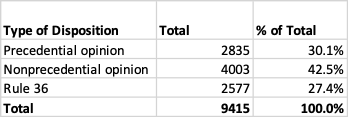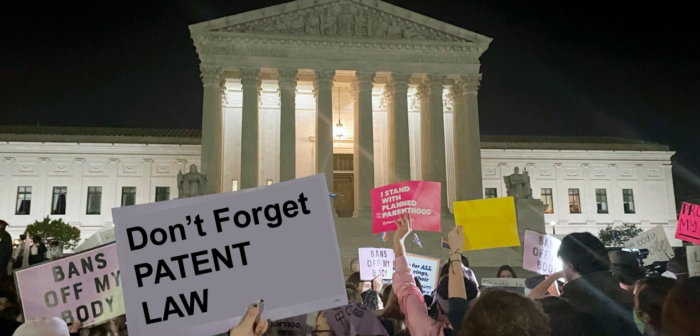Guest Post by Professor Jorge L. Contreras
On June 22, 2022, the Fifth Circuit reissued its opinion in Continental v. Avanci, replacing an earlier opinion that it issued on February 28. While the reissued opinion continues to uphold the district court’s dismissal of the suit, it also eliminates the entirety of the Circuit’s earlier dicta concerning the nature of FRAND commitments and Article III standing, dicta that was heavily criticized by amici curiae.
Background
The standardization of wireless telecommunications protocols is largely conducted under the auspices of the European Telecommunications Standards Institute (ETSI) and organizational partners such as the US-based Telecommunications Industry Association (TIA) and Alliance for Telecommunications Industry Solutions (ATIS). Parties that participate in these standards development organizations (SDOs) generally agree to license patents that are essential to the implementation of those standards (standards-essential patents or SEPs) to manufacturers of standardized products on terms that are fair, reasonable and nondiscriminatory (FRAND).
Avanci is a collective licensing platform (similar to a patent pool) that was formed in 2016 to license wireless SEPs to manufacturers in vertical markets including the automotive industry. As of this writing, Avanci’s website indicates that it has licensed SEPs to 37 automotive brands including BMW, Volkswagen, Mercedes, Ford and GM, and that its licenses cover SEPs held by nearly fifty different firms including Nokia, Qualcomm, Ericsson and InterDigital. Avanci’s licensing rate for automotive 4G SEPs is $15 per vehicle. Though Avanci itself is not a member of the relevant SDOs, most of the SEP holders participating in Avanci are members, thereby requiring that Avanci abide by their FRAND licensing requirements.
The Litigation
Continental AG is a German supplier of automotive electrical and navigation systems to automotive manufacturers. In 2019, Continental’s U.S. subsidiary filed suit against Avanci, Nokia, Sharp and several other SEP holders, alleging, among other things, that Avanci breached its FRAND commitment by refusing to offer Continental and other automotive component suppliers a license to SEPs covering the 2G, 3G and 4G standards. Specifically, Continental alleged that because Avanci’s $15 per-vehicle licensing fee would be exorbitant (i.e., in excess of FRAND) if applied to the $75 telematics control unit (TCU) sold by Continental, Avanci refused to license SEPs to component suppliers like Continental, and instead offered licenses only to automobile manufacturers. Then, because $15 is negligible in comparison to the overall cost of an automobile, automobile manufacturers would likely pay the charge, but later seek indemnification from Continental for those supra-FRAND costs. Continental thus argued that it was damaged by Avanci’s refusal to license it directly at a FRAND rate.
Continental’s complaint alleged that this refusal constituted, among other things, a breach of the nondiscrimination element of the SEP holders’ FRAND obligations, a group boycott in violation of Section 1 of the Sherman Act, and an abuse of the standardization system constituting monopolization in violation of Section 2 of the Sherman Act.
Dismissal at the District Court (485 F. Supp. 3d 712 (N.D. Tex. 2020))
Chief Judge Lynn in the Northern District of Texas declined to exercise supplemental jurisdiction over Continental’s breach of contract and other state law claims and, given that the court lacked diversity jurisdiction over the parties, dismissed those claims for lack of subject matter jurisdiction (Continental subsequently filed an action in the District of Delaware making those claims).
Judge Lynn next granted the defendants’ motion to dismiss, finding that Continental lacked antitrust standing to bring suit. First, she held that Continental did not adequately plead an antitrust injury, as it did not suffer direct harm from Avanci’s alleged failure to grant it a SEP license. She points out that despite Avanci’s alleged refusal, Continental continued to sell TCUs to automotive customers, and any indemnification claims by those customers were speculative. Moreover, she found that any antitrust violation arising from Avanci’s charging SEP licensing rates in excess of FRAND were felt by the automotive manufacturers and not by Continental. Accordingly, Continental was a “remote or indirect” victim of the alleged conduct, and therefor lacking standing to bring suit.
The court went on to find that, even if Continental had standing, its Sherman Act claims would fail. Under Section 1, the rule of reason analysis as applied to patent pools is generally satisfied when pool members are free to license the pooled patents individually, as is the case with Avanci. Citing Bell Atlantic v. Twombly, 550 U.S. 544 (2007), the court noted that “[t]o the extent the Licensor Defendants refused to negotiate with Plaintiff or only agreed to do so at the same prices at which they license to the OEMs, this alleges at best parallel conduct and the possibility of concerted action, which are insufficient to state a claim of an unlawful agreement to restrain trade” (485 F. Supp. 3d at 732).
Under Section 2, the court observed that the additional monopoly power that a SEP holder obtains through the inclusion of its patented technology in a standard is “inevitable as a very frequent consequence of standard setting, and is necessary to achieve the benefits served by the standard, including procompetitive benefits” (citing Allied Tube & Conduit Corp. v. Indian Head, Inc., 486 U.S. 492, 501 (1988)) (485 F. Supp. 3d at 733). It further noted that “[a] lawful monopolist’s charging of monopoly prices, is not only not unlawful; it is an important element of the free-market system” and that “[a] patent owner may use price discrimination to maximize the patent’s value without violating antitrust law.” (485 F. Supp. 3d at 734). Expressly disagreeing with other cases holding that “deception of an [SDO] constitutes the type of anticompetitive conduct required to support a § 2 claim”, Judge Lynn found that “[e]ven if such deception had also excluded Defendants’ competitors from being included in the standard, such harms to competitors, rather than to the competitive process itself, are not anticompetitive.” (Id. at 735). Accordingly, she found no violation of Section 2. Continental appealed.
Fifth Circuit – Withdrawn Decision (27 F.4th 326 (5th Cir. 2022))
On February 28, 2022, the Fifth Circuit, in a surprising turn of events, vacated the district court’s judgment and remanded with instructions to dismiss Continental’s claims for lack of Article III standing. This holding obviated the Circuit’s need to address the district court’s holdings regarding antitrust standing and the merits.
The Fifth Circuit’s decision to reject standing on Article III grounds – a theory that was neither briefed by the parties nor addressed by the district court – surprised many. This move was still more surprising given that the Circuit based much of its reasoning on facts that were not in evidence and assumptions that were not supported by the record.
For example, the Circuit reasoned that Continental was not an intended third party beneficiary of the FRAND commitments made by Avanci’s members because Continental was not a member of the relevant SDOs. This conclusion contradicts numerous other cases, including the Fifth Circuit’s own decision in HTC Corp. v. Telefonaktiebolaget LM Ericsson, 12 F.4th 476, 481 (5th Cir. 2021), in which it held that “[c]ompanies seeking to license under [FRAND] terms become third-party beneficiaries of the contract between the standard-essential patent holder and the standard setting organization” and “are thus enabled to enforce the terms of that contract.”
Likewise, the Circuit reasoned that a component manufacturer like Continental “does not need SEP licenses” from SEP holders because those SEP holders “license the [automobile manufacturers]” that purchase its components. This conclusion overlooks the fact that even if a SEP holder grants licenses to automotive manufacturers, not all manufacturers are licensed at any given time. Moreover, except in the unusual case in which a component supplier makes components to order for an automobile manufacturer, the manufacturer’s license does not necessarily insulate the component supplier from claims of patent infringement.
Rehearing and Withdrawal of Fifth Circuit Decision
These and other issues in the Fifth Circuit’s opinion led Continental and various amici to petition the Fifth Circuit for rehearing en banc.
On June 13, 2022, the Fifth Circuit treated the pending petition for rehearing en banc as a petition for panel rehearing, granted that petition, and withdrew its February 28 opinion in its entirety.
On June 21, the Circuit issued an unpublished, nonprecedential per curiam opinion in which it “affirm[ed] the judgment of the district court that Continental failed to state claims under Sections 1 and 2 of the Sherman Act.” Thus, the Circuit’s prior discussion of Article III standing, as well as its statements regarding the nature and beneficiaries of the FRAND commitment, are nullified. In addition, by mentioning only the district court’s substantive Section 1 and 2 holdings, the Circuit does not uphold the district court’s ruling on antitrust standing.
Conclusions
Continental v. Avanci is not necessarily over. Additional appeals of the Northern District of Texas decision are still available, and the Delaware contractual breach case continues. Yet, the Fifth Circuit’s unusual withdrawal of its February 28 decision is a positive development in the evolving law concerning FRAND and SEP licensing. First, it reinforces the widely held understanding that all implementers of standards are intended third party beneficiaries of FRAND licensing commitments made to SDOs (or at least declines to introduce dicta contrary to that understanding). Second, it fails to support the notion that a SEP holder may avoid its obligation to license the suppliers of standardized components by licensing their end customers. And most importantly, it declines to support the abstemious construction of antitrust standing adopted by the district court. While there is clearly more to come in this and other disputes between component suppliers and SEP holders, the Fifth Circuit has avoided further muddying the waters in this already murky area.
[Note: the author led a group of thirteen law and economics scholars advised by Setty Chachkes PLLC in the filing of an amicus brief supporting en banc rehearing of this case.]








